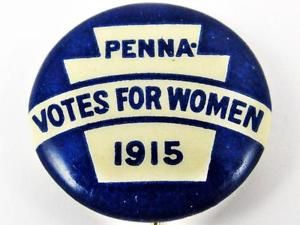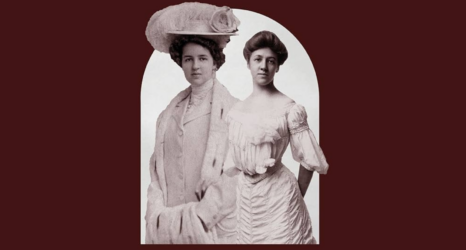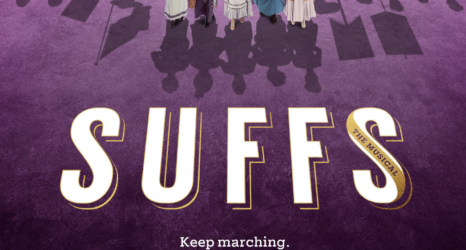April 22, 1919: Keystone State suffragists have never lacked determination, and today their persistence paid off, as the Pennsylvania House passed a bill—by an almost two-to-one margin—to put a suffrage referendum on the State ballot in 1921.

“Votes for Women” advocates never gave up after the 1915 suffrage referendum went down to defeat along with referenda in three other big Eastern States that fall. They have been hard at work ever since, and have greatly increased the public’s support for equal suffrage in Pennsylvania, so once the State Senate has passed the bill and the Governor has signed it, the referendum is expected to easily pass if nationwide suffrage has not been won by then.
But the proposed Pennsylvania Suffrage Referendum of 1921 is just one small part of the reason why optimism abounds. Just yesterday, Iowa became the eighth State in three months whose legislators have passed bills enabling women to vote for President.
Though only partial victories, in that women do not have full voting rights in these newly-won States, the fact that women can now vote for President in 27 of the 48 States, which have a combined total of 302 Electoral Votes out of the 531 which will be cast, means that regardless of whether the Susan B. Anthony (woman suffrage) Amendment is passed and ratified before the 1920 elections, women’s votes will be critical to Presidential candidates in the next—and all future—elections.
Leaders of the National American Woman Suffrage Association are confident that the addition of Iowa, Indiana, Maine, Minnesota, Missouri, Wisconsin, Tennessee and Vermont (if the Governor’s veto is not sustained by the courts) as Presidential suffrage States will be enough to pressure Congress into passing the Anthony Amendment.
The members of the new Congress will represent 15 States in which women vote on the same basis as men, 12 in which they have Presidential suffrage, and 29 states in which women have some sort of local suffrage (some of which are the same States in which they have Presidential suffrage) and two States in which women can vote in party primaries.
There are now about 15,000,000 women eligible to vote for the next President—a number just 2,000,000 less than the total number of votes actually cast for the two major party candidates in the 1916 Presidential election.
The West has only one State—New Mexico—where women cannot vote for President, and even the “Solid South” cracked a bit five days ago, as Tennessee’s Governor Roberts signed a bill lifting the ban on women voting in municipal and Presidential elections.
The 66th Congress will be back in session on May 19th, and it is expected that the House will once again pass the Anthony Amendment, doing so by a comfortable margin and almost immediately. Polls from various suffrage groups show uncertainty over whether there are precisely enough votes in the Senate, or whether one vote is still lacking for the required 2/3 majority.
But the sudden rush of support for Presidential suffrage by the legislatures of so many States can only add to the impression that momentum is on our side, and put the burden of proof on those who oppose full and equal suffrage to show why those who have been deemed by most States to have the right and ability to choose who will fill the highest office in the land should be denied the right to choose who will fill lesser positions.
Since there has never been a time limit on how long any member of our movement will work to get a suffrage amendment passed by Congress, and the Anthony Amendment itself contains no time limit on gaining ratification by 36 of the 48 States, the only question that remains now is whether women will have a Constitutional right to vote before, or not long after, the 1920 elections.





